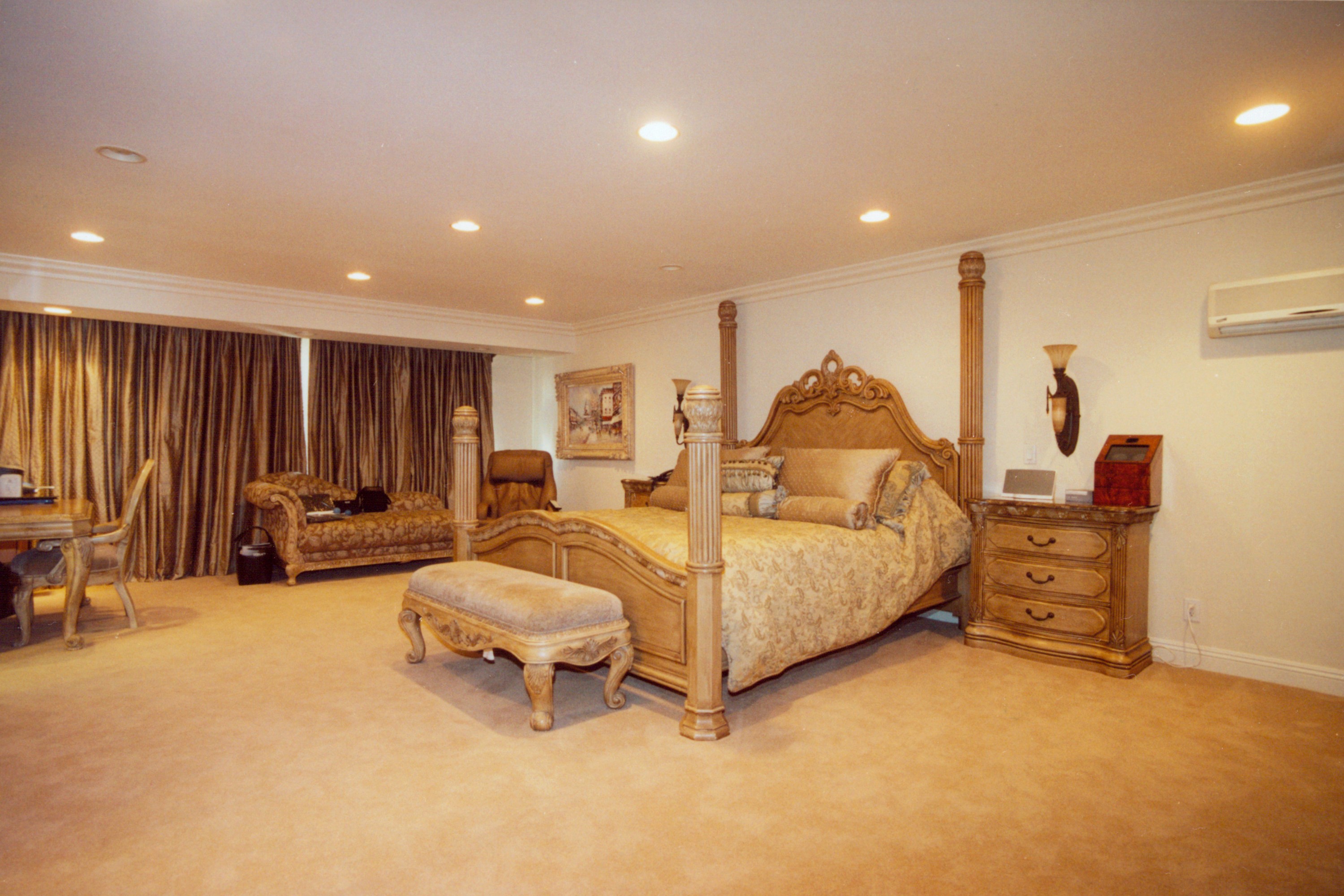By Joe Szabo,ScottsdaleReal Estate Team
The most frequent question that I get from perspective customers is “ What type of carpet should I buy?” Instead of coming up with a quick answer, my response is to start asking probing questions. The first question I ask is “why do you want to replace your carpet?”
Understanding the motivation behind a customer wanting to change their carpet will give me a starting pointing in my recommendation.
When I met with Rick and Sally Brown about replacing their carpet, they explained to me that they were expecting their first child and they wanted to buy a carpet would be best for their new baby.
Again, instead of giving Sally and Rick a quick recommendation, I felt it was important to probe a little further, so I asked them to tell me what was the most important characteristics of their new carpet. They said that a carpet has to be easy to clean, reasonably priced and soft enough for their baby. After gathering the characteristics that were important to the family, now we can look at the three primary fabrics(fibers) to choose from.
Nylon: Nylon is the strongest fiber of all the carpets. It has excellent resistance to abrasion, insects, molding, mildew, rot, and many chemicals. It is also easy to maintain, and dye, while upholding its color admirably.
With all of these advantages, nylon makes quite a formidable carpet. Thus, it is the main choice for residential use, accounting for 9 of 10 homes. With such a large hand in the residential carpet business, it would be expected that nylon carpet holds up well in traffic, hides soil, and is available in brilliant colors. Which indeed it does all very well. Nylon carpet is priced averagely, not quite as expensive as wool, but more expensive than polypropylene, and polyester.
Nylon does have its disadvantages. For example, nylon carpet is quite susceptible to stains. Nevertheless, manufacturers have developed methods for increasing stain resistance. One method, adding acid dye stain blocker to the carpet, greatly increases its stain resistance. The longevity of nylon carpet depends on the quality you buy.
Midlevel and high-end carpet can last up to 12 to 15 years. However, it does come at a cost. Prices range anywhere from 25 to 50 dollars per square yard. On the other hand, you can buy it quite cheap if your willing to have a lower grade of quality. At 8 dollars per square yard, you will get you basic nylon carpet. Then again, it will lose its color brightness and fade at a much quicker pace. It will also tend to lose its bounce, and relax. However, this is the case with any low-end carpet.
PET (recycled): Also, it is more stain resistant than nylon carpet. However, nylon carpet is much stronger than polyester, which tends to shed more. Additionally, it is quite resistant to mildew, and moisture (at a cheaper cost than nylon). It is also non-allergenic. Another thing to point out about polyester is that some of it (if not all) is made from recycled bottle caps. Which may improve indoor air quality. About 50 soda bottle caps go into a square yard of carpet. Which is a great talking point. It is also quite cheap, cheaper than wool, and nylon. Then again, you have to remember, when purchasing the recycled version of this carpet, it is actually made of plastic. So, it would be a good idea to first test this in a single room, before going all out with this environmentally friendly carpet. You might notice a gleam when looking at it, or squeak when walking across it
Olefin: Polypropylene, (also called olefin) is the prime choice for commercial carpet, and outdoor carpet. Depending on the cut, it will wear very well, clean easily, and is suitable for high traffic areas. It is inherently stain resistant. In fact, its stain resistance is so high you can spill chlorine on it, or other harsh chemicals, and it will have little effect. Coupled with these two factors, it is also very cheap, cheaper than wool, nylon, and polyester. For these reasons, polypropylene continues to gain popularity. Due to its high resilience to sunlight, mildew, and moisture; polypropylene is an excellent choice for an outdoor carpet, and is actually used for artificial sports turf.
However, with all these benefits, comes disadvantages. Polypropylene is not exactly ‘crush resistant’ and can be prone to matting, crushing, and general scuffs. This also depends on the pile cut. It is also difficult to dye. Additionally, polypropylene attracts a lot of oily soil. Though this can be canceled out by the fact that strong chemicals may be used to clean it.
Floors must withstand your lifestyle. They get nicked by high heels, crusted by muddy boots and crushed by furniture legs. Sunlight, moisture, pets, stains, spills, and childhood accidents all leave marks. Yet it’s common to focus on how a floor covering looks and forget how it will wear.
Carpet
There are four clear choices when it comes to floor covering: carpet, wood, tile, and vinyl. Carpet cuts down on noise and hides problems with subflooring. It also offers wobbly toddlers a softer landing, and warms your toes on chilly mornings. Damage can be repaired using leftover carpet, if the wear and fading have not been extensive. For those who suffer from allergies, carpet squares can provide a viable option. These squares are completely removable and can be cleaned outdoors to avoid stirring up dust mites and allergens. No matter the health concerns, carpet must be vacuumed regularly and shampooed annually, at the very least, to ensure a quality floor covering.
Wood Floors
Wood flooring is a popular choice for many reasons. Wood floors don’’t harbor dust, bacteria, or dust mites the way that carpet can. Wood floors come in natural styles, are durable and, when properly sealed and finished, can be cleaned with a wet mop. Woods such as oak, cherry, or fir don’t dent as easily as pine, and most gouges can be restained to hide the damage. Hardwood floors can be left their natural color or given a stain, ranging from light (blond) to dark (cherry). Simulated wood products, such as Pergo, look like wood but are made of synthetic rubbers that won’t scratch or dent as easily as the real thing — yet they offer the same visual appeal as wood, including the grain that defines hard woods. These synthetic floors are particularly well suited to high-traffic areas like kitchens and mudrooms.
Vinyl
Vinyl makes perfect sense in kitchens, dining areas and entryways where water and grime collect. Vinyl cleans up well, looks attractive, and resists damage from furniture legs and falling objects. Vinyl squares, sold in 12- and 16-inch sizes, are the easiest floor product to install, bar none. They have a peel-and-stick backing, which allows them to go directly onto a prepped floor, and eliminates the mess of working with an adhesive. Vinyl squares also come in styles that mimic ceramic tile, but without the risk of chipping and cracking. Vinyl sheeting is an excellent choice for bathrooms and laundry areas, though sheeting must be cut to the exact size before being laid. Vinyl sheeting, unlike tiles, is not a peel-and-stick product, so you’ll need to apply glue to the floor before laying in the precut sheet. Price and quality vary depending on the thickness, pattern, and design of the floor covering.
Ceramic Tile
Ceramic tile has decorated floors since the days ofGreece,Persia, andRome. Today’s ceramic tiles boast brighter colors, and more elaborate patterns and styles. Fired ceramic is rugged and hard, functional and beautiful. Because it is non-porous, ceramic tile withstands moisture, and is well suited for bathrooms, laundry rooms, and kitchens. Its beauty makes it an elegant choice for living areas, as well. Installing ceramic tile is a major undertaking, however, even in a small area such as a front or rear entryway. This is not a job for the faint-hearted or weak of knees. If you do it yourself, you will spend much time on your hands and knees, will learn to trowel, and will become adept with a tile cutter.
Please note that this Scottsdale Real Estate Blog is for informational purposes and not intended to take the place of a licensed Scottsdale Real Estate Agent. The Szabo Group offers first class real estate services to clients in the Scottsdale Greater Phoenix Metropolitan Area in the buying and selling of Luxury homes inArizona. Award winning Realtors and Re/MAX top producers and best real estate agent for Luxury Homes inScottsdale, The Szabo group delivers experience, knowledge, dedication and proven results. Contact Joe Szabo at 480.688.2020, info@ScottsdaleRealEstateTeam.com or visit www.scottsdalerealestateteam.com to find out more about Scottsdale Homes forSaleand Estates forSaleinScottsdaleand to search the Scottsdale MLS for Scottsdale Home Listings.




